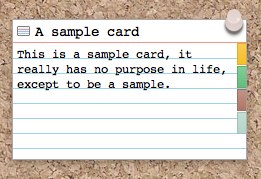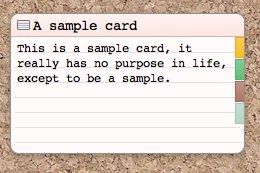I think part of the problem here is that you are lumping together view toggles with preferences. Whether or not to show keyword chips is not a preference—rather it is a project specific setting. You may want that in one project but not another. If it was set up in preferences you would no longer be able to customise your projects in accordance with what they needed to display. Same of course goes for pins and stamps.
Now, the palette in the footer bar is a level below even project specific. That is split specific. Each split view can have its own view settings at this level. If you lump everything together, you either end up with too many options at the split level, or a loss of flexibility by making stuff global that shouldn’t be global. How to handle card wrap is very split-centric because one split might be a single card wide, while another is 30 cards wide. You wouldn’t want the same setting for both! Moving something like keyword chips to the palette would mean turning off keyword chips completely now requires you to open up a split if necessary, change the view mode to corkboard in both, and disable it in both splits.
So while it makes a kind of sense to put “None” in the number of keywords drop-down, this would in effect cause greater issues elsewhere.
Stepping back a bit to the larger issue and away from the details: Yes, there are a few places you have to visit to set up the corkboard, but the question is: do most people visit all four of these places on a regular basis?
I think the answer to that question is no. I think once people fiddle with things and find some comfortable colours and workflows, they largely never visit the colour section in Appearance, or change aspects in Corkboard. I know I certainly played with preferences a lot when they first appeared, but now that I’ve been using 2.0 for ages—I never adjust anything unless I’m experimenting with a reported bug or something.
For actual work, I have things set up the way I like them and that is pretty much how they stay. So the “four places” problem really seems to be more of a “two places” problem in the long run and given the problems with grouping these two together as detailed above, I’ve never had cause to gripe with it—especially since many of the project specific settings have keyboard shortcuts. I do actually turn keyword chips, stamps, and pins on and off quite a bit—but I always use the shortcuts for that so never even really think of them as being in “another place”.
For me, the several places are organised in terms of frequency of change and relevancy of scope. The specifics of how cards are laid out in a corkboard—that something I change quite a lot, maybe even whenever I adjust a split size by a fair bit. These tools are handy and accessible and don’t mess up my other corkboard when I access them.
Meanwhile the stuff I change generally once when I set up the project are all located in menus. The few things in these menus I flip on or off more frequently have shortcuts so that’s fine.
The rest—I never touch that stuff save but for once every six months when my mood changes. I’ll go from dainty and pastel to brooding leather and wood panelling or something. Spreading them out means no one area is unduly cluttered with stuff that you rarely use. To change how many cards show up in a row, you don’t have to pick through 50 controls of things you never alter.
If you don’t like the look of it, you could try going back to the more analogue look, which uses a pin for the label colour instead of a colour chip. The rounded card look is rather meant to have a more seamless design and it will be conducive to people who use keywords as “multiple labels”.

[size=80]Theme: Red and Blue Lines; Pin on right[/size]
Or, if you want a more obvious label colouring mechanism, try turning of the right-side chip and setting label colour to tint the entire index card. This basically does exactly what you ask for above.

[size=80]Theme: rounded; Pins off; Label colour in index card[/size]
I have no comment on snapping. I don’t think that’s a bad idea, so long as the magnetic area isn’t too large (some people like the analogue helter-skelter look, by the way, so you wouldn’t want free-form to end up effectively enforcing a grid)—however that might be difficult to actually implement and that sort of thing is up to Keith anyway.

